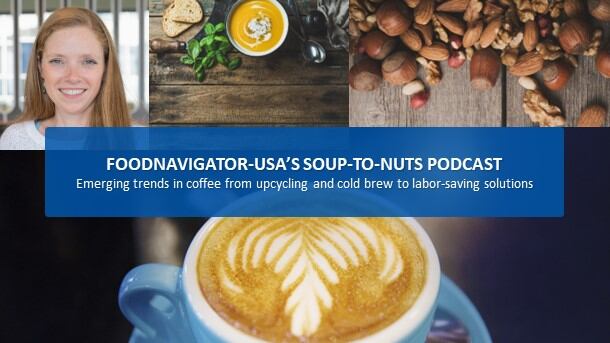The total capital invested in 2022 ($47 billion) is similar to previous years of $55 billion in 2020 and $39 billion in 2019, Helana Robbins Huddleston, co-leader, manufacturing and distribution, explained Helana Robbins Huddleston of the advisory, assurance, and tax firm CohnReznick.
Huddleston noted that although average deal size decreased (about 2,000 closed deals in 2019 and 2022 versus 8,800 in 2019), venture capital funds have increased in the food and beverage industry, including Nestle’s acquisition of Seattle’s Best Coffee for $7.15 billion from Starbucks and the merger between Coffee Holding Company and Delta Corp Holdings Limited.
Of Nestle’s acquisition, Huddleston commented that the deal was an opportunity for Starbucks, which bought Seattle’s Best Coffee in 2013 for $72 million, to focus on its own brand, while maintaining its coffee alliance with Nestle —“You’re going to see more talk about that strategy and carving out businesses or divisions that just don’t fit the management team focus going forward.”
Additionally, Huddleston explained, the merger between publicly traded wholesale coffee roaster and dealer, Coffee Holding Company and Delta Corp Holdings Limited, a privately held global holding company that focuses on Balkan energy logistics, fuel supply commodities and asset management was an unlikely but noteworthy combination. The merger highlights the coffee industry’s growth via increased demand, traceability and sustainability, health and wellness and product diversification.
Plant-based food brands and private label see more investment and growth
Huddleston noted that in the past five months, investors are focusing on plant-based companies and beverages, including plant-based seafood. Although, consumers are switching to meat as the cost of plant-based foods are higher, she explained. High costs of plant-based foods can be attributed to sourcing, production and transportation—although hybrid animal and plant-based protein products could serve as a bridge for consumers to pursue a more plant-based diet at a competitive price.
Within the plant-based food scene, innovations in texture, performance and allergen-free are addressing consumer demands for palatable and nutritious foods. Climax Foods’ launch of its plant-based casein Caseed, for example, exhibits a near identical texture, flavor and performance of dairy cheese, while devoid of the top eight allergens. JUST Egg’s revision of its pourable plant-based egg product is soy lecithin-free to avoid potential food sensitivities, while reducing ingredients on its label.
As consumers continue to focus on value, it’s no surprise that private label brands are gaining momentum “that's driven more by the inflationary period [where] consumers [are] finding ways to reduce the cost of their goods but still getting the quality and the substance that they want,” she added.
Retailers are leveraging their existing brand recognition, shopper loyalty and supply chain to promote new private label offerings or line extensions to shoppers; while distribution and supply chain networks can serve as a competitive advantage.
Regardless of the sector, Huddleston attributes brand growth to a variety of strategies including unique product offerings, utilizing AI for innovation, leveraging data from marketing firms, personalizing products, focusing on sustainability and clean ingredients and managing production through automation and data tracking.
“Innovation plays a key role whether it’s renovation or innovation, if you can find a way to revitalize something to make it more relevant to a consumer that exists already or come up with something new that meets consumer’s unmet needs, you’ll find that they’re far less price sensitive than the commoditized products that have been in the market for a long time,” Andy Reichgut, CEO, Dr. Praeger’s elaborated.
Investing in promotions and productivity to drive units
As production volumes are down across the industry, Reichgut emphasized the importance of investing in promotions that drive units while solving unmet consumer needs. As an example, he shared, “We would promote buy one of our California veggie burgers and save $2 on our new veggie fries. So you're creating a meal solution. It's driving instrumentality and increasing the basket rings for the retailer.”
Further, the panel also mentioned the potential impact of inflation on lower-income consumers and the need to consider smaller sizes and lower price points to cater to consumers with less disposable income.
Retailers are challenged with increasing basket content in-store and online. Whether it’s through a rotatable, curated check-out aisle that entices consumers to add to their baskets in-store, or creating personalized promotions for online shoppers before and during the cart checkout, it’s an opportunity, as Reichgut mentioned, for retailers to address consumer’s unmet needs.
Reichgut suggested that for companies to keep momentum going, they must invest in productivity initiatives—“Productivity is basically trying to find a way to make your product less expensive to make and better for the consumer…so focusing on your total delivered cost, finding ways to make it less expensive, but then doing the rigor to make sure it’s actually a better product is key. And that’s where the results come from.”
Consolidating logistics and operations strategies into aggregated partnerships continues to shape companies’ business strategies. Recently, PartnerSlate raised $4 million to facilitate partnerships between CPG brands and co-manufacturers. The online marketplace includes nearly 6,000 co-manufacturers with the ability to filter for projects that align with specific equipment, capabilities, risk tolerance and capacity.
While Nuritas’ AI-powered database contains over six million peptides from plant-based sources with each linked to specific health actions, allowing for a more streamlined ingredient delivery to market. For food and beverage companies, this creates more time spent on production, marketing and sales and less time searching for active, plant-based peptides catered to a specific audience.
After a relatively glacial innovation period between 2020 and 2021, “innovation is coming back and people are shopping,” Huddleston commented.




